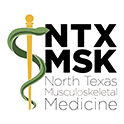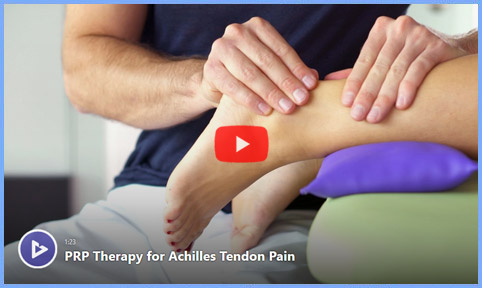Foot & Ankle Conditions
The foot and ankle are composed of a complex series of joints involving 26 bones and numerous ligaments, tendons and muscles. Although this complexity of structure gives the foot flexibility and remarkable function, it is also prone to dysfunction due to the weight and stress on these joints. These bones are lined by a thin, flexible surface called articular cartilage that acts as a cushion to reduce friction and enable smooth movement. The bones are held in place and supported by ligaments, muscles, and tendons. Due to poor blood supply, injuries to the collagenous tissues of the ankle or foot generally do not heal quickly or completely. This leads to a more chronic condition and tendency toward arthritic deterioration of joint cartilage.
Treatment Options
Osteopathic Manipulation helps to restore structural dysfunction to allow the bones to glide over each other smoothly and comfortably. Mechanical efficiency helps to prevent friction that causes inflammation and pain. Correct mechanical structure also prevents secondary stress on adjoining tissue and further complications.
Bone Marrow Aspirate Concentrate, commonly known as stem Cell Therapy and PRP accelerate and enhance the natural healing process, supplying healing cells to areas where poor circulation does not adequately supply needed growth factors. Orthobiologic procedures increase blood flow to the affected area to remove damaged tissue and supply nourishment necessary to the healing process. Orthobiologic Cell Therapy can eliminate the necessity of surgery for most musculoskeletal conditions.
Benefits of Regenerative Medicine
- Natural Healing: Regenerative treatments harness the body's innate healing mechanisms, promoting long-term recovery rather than temporary symptom relief.
- Reduced Risk of Side Effects: Unlike corticosteroids, regenerative therapies generally have fewer and less severe side effects, as they use natural substances from the patient's own body.
- Enhanced Tissue Repair: Regenerative medicine aims to repair and regenerate damaged tissues, potentially restoring function and reducing the need for more invasive treatments.
The Promise of Regenerative Medicine
Regenerative medicine offers a transformative approach to treating musculoskeletal conditions by harnessing the body's natural healing capabilities.
- Platelet-Rich Plasma (PRP) Therapy: PRP therapy involves extracting a small amount of the patient's blood, processing it to concentrate the platelets, and injecting this platelet-rich plasma into the injured area. PRP is rich in growth factors that promote tissue repair and regeneration.
- Stem Cell Therapy: Stem cell therapy uses the patient's own stem cells, typically harvested from bone marrow or adipose tissue, to promote healing. These stem cells can differentiate into various types of cells needed for repair, such as cartilage or tendon cells.
- Prolotherapy: Prolotherapy involves injecting a solution, often containing dextrose, into the damaged area. This solution irritates the tissue, triggering the body's natural healing response and promoting the repair of ligaments and tendons.
Regenerative procedures are designed to help reduce knee pain and improve function with precise
highly specific image-guided medical procedures.
If you have pain in your Achilles tendon, platelet rich plasma therapy may help. It uses parts of your own blood to help your body heal itself. PRP can help your ankle feel better and work better.
To determine if Regenerative Orthopedics will be helpful for you, please tell us about your condition.
Common Application
Ankle sprain/strain. Ligaments are tough rope-like tissues that connect bones to other bones, holding them in place to provide stability to the joints. When stretched too far, ligaments become damaged and swelling, pain, and bruising will develop.
Achilles tendonitis/-osis. The Achilles tendon is a band of tissue that connects the major muscles of the calf to the heel. The exertion of force or repeated stress on the tendon can cause it can to become overworked and inflamed. The ankle becomes less flexible making the tendon prone to tears.
Achilles tendon rupture. This fibrous cord behind the ankle ruptures most often in athletes participating in sports that involve running, pivoting, and jumping. Pain may be severe. If the rupture of the tendon is not complete, autologous cell therapy can be an effective treatment.
Osteoarthritis. Arthritis is inflammation resulting from the degeneration of cartilage in the joint, causing pain, swelling, and stiffness. Movement becomes restricted. Arthritis of the foot and ankle can occur due to fracture, dislocation, inflammatory disease, or congenital deformity. When left untreated, shifting of the bones may occur.
Plantar fasciitis/ Heel spurs. Plantar fasciitis is one of the most common causes of heel pain. Pain common with this condition is due to inflammation of the plantar fascia, a thick band of tissue that lies at the bottom of the foot to form the arch. The plantar fascia functions as a shock absorber and supports the arch of your foot. Excessive pressure over the fascia may strain and tear the tissue. Repeated overstretching or overuse causes irritation or inflammation. Impact from running or other sports, along with tight calf muscles and excess weight can contribute to this condition. Orthobiologic procedures help to heal this condition more quickly and effectively without the necessity of extended rest.
Morton’s neuroma. Morton’s neuroma refers to a nerve injury between the toes, usually the third and fourth toes, which causes burning pain in the ball of the foot. Thickening of the nerve tissue generally occurs due to scar tissue. Compression or chronic irritation of this interdigital nerve is the main cause of Morton’s neuroma.
Understanding the Risks of High-Dose Corticosteroid Injections
The management of pain and inflammation is a critical aspect of patient care in musculoskeletal medicine. High-dose corticosteroid injections have been a mainstay treatment for various conditions such as arthritis, tendonitis, and bursitis. However, while these injections can provide rapid relief, they are not without significant risks. Learn more about negative effects of cortisone in Dr. Minotti's blog.
The Downside of High-Dose Corticosteroid Injections
Corticosteroid injections work by reducing inflammation, thereby alleviating pain. However, the use of high-dose corticosteroids comes with several potential adverse effects.
- Joint and Tissue Damage: Repeated corticosteroid injections can lead to the weakening of tendons, cartilage, and bone. This can result in joint instability and an increased risk of tendon ruptures.
- Osteoporosis: High doses of corticosteroids can accelerate bone loss, increasing the risk of fractures and osteoporosis.
- Infection Risk: Corticosteroid Injections can suppress the immune system, potentially leading to infections such as septic arthritis.
- Endocrine Disruption: Corticosteroids can interfere with the normal function of the adrenal glands, potentially causing hormonal imbalances and conditions such as Cushing's syndrome.
- Short-Term Relief: While corticosteroids can provide rapid pain relief, this effect is often temporary, necessitating repeated injections and increasing the risk of cumulative damage.

We Can Help
To learn more about what we can do to help with your condition, call our office at 817-416-0970. We will thoroughly diagnose your condition and present you with treatment options. From there we will guide you along your road to recovery.

